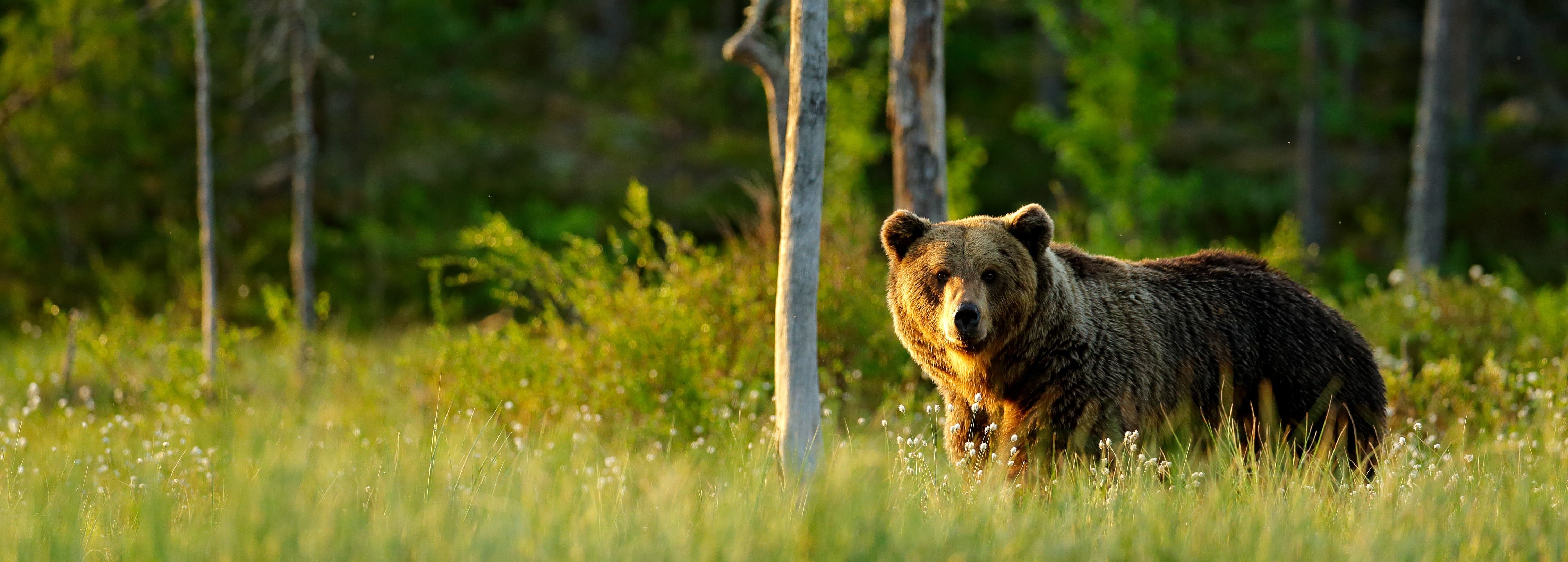Environmental protection
 Despite the unprecedented external challenges of 2020, Russian Railways retained its global leading positions in energy efficiency and sustainability among international companies. In its technological advancement, the Company keeps prioritising contribution to the achievement of sustainable development goals, which, in terms of environmental safety, focus on promoting resource/energy saving technologies, eliminating environmental damage accumulated as a result of railway operations of previous years, efficient use of natural resources, and preservation of natural systems.Sergey Kobzev Deputy CEO, Chief Engineer
Despite the unprecedented external challenges of 2020, Russian Railways retained its global leading positions in energy efficiency and sustainability among international companies. In its technological advancement, the Company keeps prioritising contribution to the achievement of sustainable development goals, which, in terms of environmental safety, focus on promoting resource/energy saving technologies, eliminating environmental damage accumulated as a result of railway operations of previous years, efficient use of natural resources, and preservation of natural systems.Sergey Kobzev Deputy CEO, Chief Engineer
Russian Railways is a major natural resource user operating in 77 regions of Russia. The Company has set its priorities in the rational use of natural resources and improving environmental safety until 2025 in line with the basic principles of state environmental development policy for the period through
The Company’s environmental activities are primarily governed by the Health, Environmental, Industrial and Fire Safety Policy of the Russian Railways
Russian Railways’ key environmental initiatives in 2020
In 2020, Russian Railways approved the Environmental Strategy through 2030, which reflects the Company’s commitment to the UN global goals and national sustainable development goals.
As part of the Environmental Strategy implementation, significant steps were taken to enhance the environmental management framework, adopt resource-saving technologies and environmental best practices, and reduce the environmental footprint of the Company’s business units.
Russian Railways’ contribution to the goals of sustainable development and climate agenda include participation in the task forces of the UN organisations and International Union of Railways (UIC). In July 2020, Oleg Belozerov, CEO and Chairman of the Management Board of Russian Railways, signed the UIC Declaration on Sustainable Mobility, which proclaims railway companies’ commitment to reducing specific energy consumption and CO2 emissions, achieving carbon neutrality by 2050, and reaching sustainable development goals.
Reducing environmental impact
In reducing its environmental impact, the Company follows the Environmental Strategy through 2020 and potentially through 2030 and the Climate Doctrine of the Russian Federation. Russian Railways responsibly implements a programme for reducing GHG emissions in its operations.
GHG emissions management is an element of Russian Railways’ corporate strategy, Russian Railways submits annual data for GHG emission assessment for the purpose of CDP reporting and attends working group meetings of the Russian Union of Industrialists and Entrepreneurs (RSPP) and the Ministry of Economic Development. The Company takes part in discussions on federal regulations, submitting proposals and comments based on specifics of the railway transport.
In late 2019, to develop the GHG emissions accounting and management system, Russian Railways adopted a programme of organisational and technical initiatives for 2020–2025. According to the Long-Term Development Programme, specific GHG emissions in 2025 will be 4.5% down vs 2018. The decline will be attributable to new solutions which reduce fuel consumption in traction and stationary power generation. The deployment of modular gas-fired boilers instead of those fuelled by coal and fuel oil significantly reduces pollutant emissions.
Shifting to new types of rolling stock is essential for reducing GHG emissions. In particular, the indicative environmental impact of Lastochka electric trains calculated by the Company showed a significant advantage of rail passenger transport as compared to motor vehicles. In 2020, Lastochkas emitted 105.9 kt of CO2 vs 829.2 kt of CO2 which motor vehicles would emit for transporting the same number of passengers over the same route (7.8 times higher).
Air protection and noise exposure reduction
As part of the corporate Environmental Strategy, the Company cut its emissions from stationary sources in 2020 by 13% y-o-y.
For the purpose of noise control and reducing emissions in residential areas, the Company draws noise maps for ranking risks and developing a priority action plan to mitigate them. Other factors contributing to noise reduction:
- continuous welded rails;
- grinding of rails and interlocked turnouts;
- turnout replacement;
- use of anti-vibration pads;
- aluminothermic welding of rails;
- installation of noise protection screens as part of railway upgrade and construction.
Russian Railways always looks for innovative solutions to reduce noise levels.

In November 2020, Russian Railways and the Ministry of Natural Resources and Environment approved the Action Plan for environmental protection in Lake Baikal’s natural territory during the construction and upgrade of the BAM and Trans-Siberian Railway infrastructure.
Its key elements include:
- a unified environmental monitoring system to oversee the works in Baikal’s natural territory (stationary environmental laboratories, video recording units, local stationary posts and mobile control units);
- cleaning up the shores of Lake Baikal between the villages of Baikal and Talovka (361 km);
- reducing the negative impact on the territory of the Slyudyanskoye Lake and Shamansky Cape regional natural monuments;
- switching 14 heating units for track labourers from furnaces to electric energy;
- developing a separate waste collection system;
- restoration of 20 ha of forests;
- engaging fire trains in extinguishing forest fires near the railway infrastructure.
The construction and upgrade of infrastructure facilities required to increase the throughput capacity of the BAM and Trans-Siberian Railway covers 144 facilities in Lake Baikal’s natural territory, 47 of which are already in progress. 69 facilities have received the approvals of the state environmental and technical review boards. An environmental certificate covering compensatory measures and environmental monitoring and control data is provided for each facility.
Waste management
Up to 80% of the waste generated by Russian Railways is decontaminated, reused or recycled. Most of it (ferrous and non-ferrous scrap metals and used petroleum products) is handled by waste processing professionals. Waste is also reused within the Company, including waste hazard classes 5 and 2–4 as per the waste management licence obtained by Russian Railways. In 2020, the share of the production and consumption waste that was decontaminated, reused or recycled in the total waste generation increased by 0.3 p.p. y-o-y.
In 2020, Russian Railways generated 1.406 mt of production and consumption waste, of which 0.064 mt was disposed of or decontaminated by the Company’s units. 1.477 mt of waste was transferred to third parties, including:
- 1.066 mt for subsequent disposal;
- 0.165 mt for decontamination;
- 0.246 mt for dumping.
Biodiversity conservation
The Company pays great attention to the conservation of biodiversity in railway infrastructure areas and next to railway stations. Parts of tracks often crossed by animals are equipped with reflective tape, and are monitored together with forestry and hunting sector representatives.

